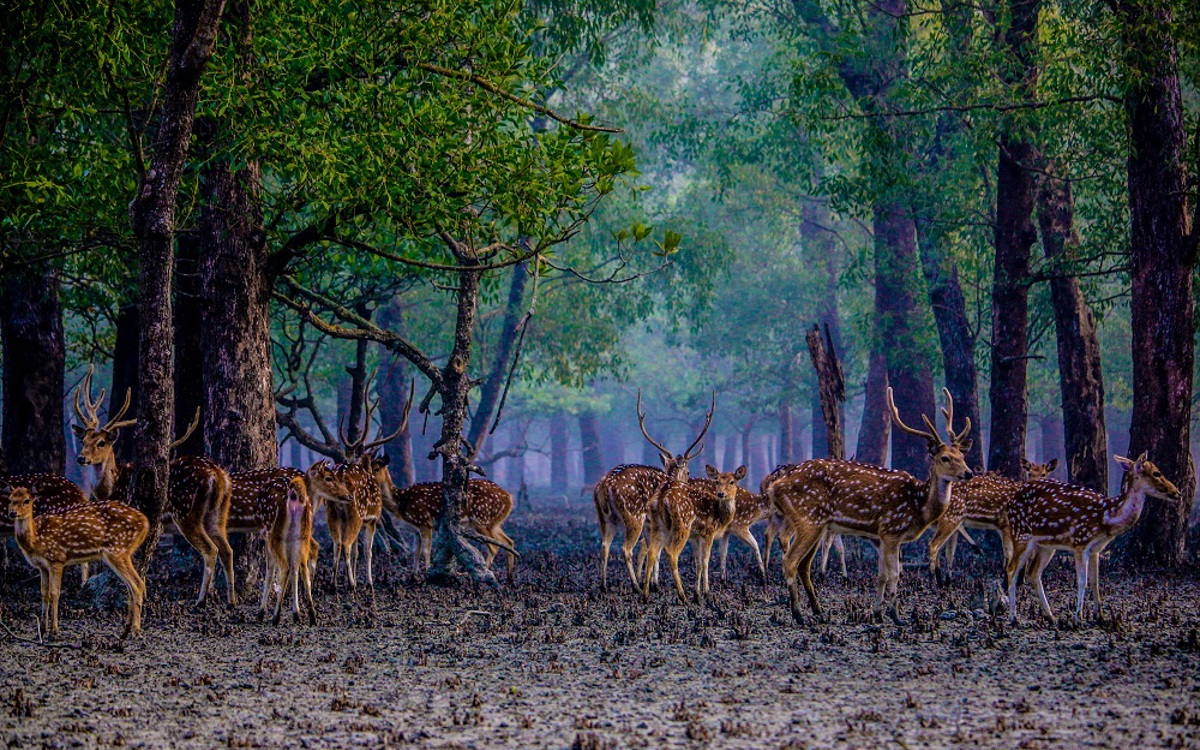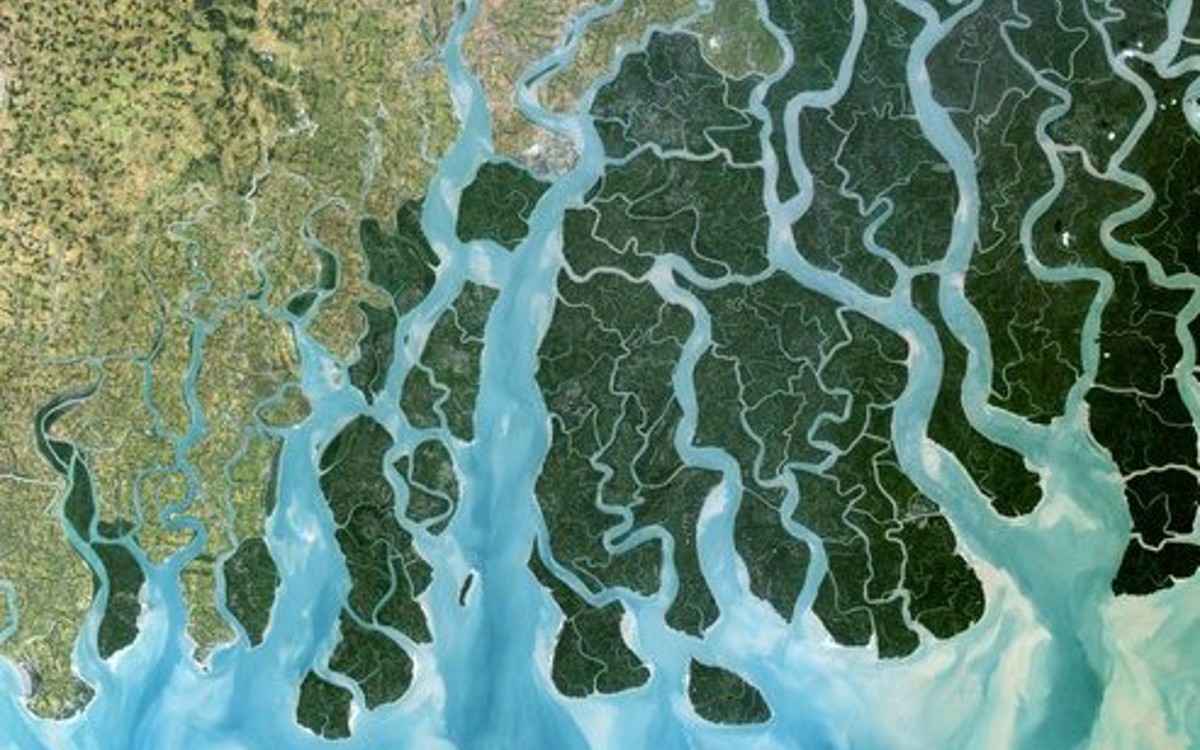Has the Anthropocene depleted our imaginations, as well as our natural resources?
By Kanchana Mahadevan, University of Mumbai, India

Has the Anthropocene depleted our imaginations, as well as our natural resources?
By Kanchana Mahadevan, University of Mumbai, India
Few concepts capture the skewed relationship between humans and nature better than that of the Anthropocene: the dawn of a new geological period indelibly shaped by human influence. Even the origins of the word (anthropo meaning man) evoke the dominance yielded by humans over the earth. The historian Dipesh Chakrabarty notes that humans are no longer merely biological beings, but geological agents capable of causing fundamental changes on a planetary scale. Yet despite all this power and dominance, humans have failed to address the climate crisis or change the way we live our lives. Has the Anthropocene depleted our imaginations, as well as our natural resources?
Of course, scientists continue to debate the Anthropocene. Geologists dispute whether the evidence truly supports the declaration of new geological epoch; others argue over the date it began. Some, such as the science writer Peter Brannen, propose that even the concept itself is anthropocentric, placing an amplified emphasis on human influence. ‘The idea of the Anthropocene inflates our own importance by promising eternal geological life to our creations,’ he writes. ‘It is of a thread with our species′ peculiar, self-styled exceptionalism – from the animal kingdom, from nature, from the systems that govern it, and from time itself.’
Yet the Anthropocene remains valuable as a figurative – rather than necessarily a formal – epoch. It gives impetus to the grave and pressing problem of climate change and the role of humans on planet Earth, while at the same time highlighting our limitations. The paradox of ecological imbalance is that, while a consequence of human activities, it then acquires its own momentum and breaks free of human control. The carbon footprints introduced by human beings, for example, acquire a life of their own and can no longer be mastered or overcome through human intervention.
A storehouse of resources
But what has this to do with a failure of the imagination? The imagination is our capacity for thinking about things that are not immediately present or understood. It is our creative ability to think about things that are foreign, different, or ‘other’ to our own experience. In the context of nature, it enables us to imagine lives that are other than our own; to engage with the non-human world. It can help us to see beyond a human-centred worldview to start thinking of nature as having its own intrinsic value and needs, rather than seeing it through the lens of usefulness.
But this might be harder than it sounds. The philosopher Martin Heidegger argued that humans are in the grip of what he called ‘calculative thinking’ – where a calculation becomes essential to our understanding of the meaning of things. This way of thinking homogenises nature, carving it into profitable and uniform commodities with exchange value. When we force nature to fit ‘the frame of mind of man’s command,’ Heidegger notes, we find ourselves in a world in which ‘man always and only sees himself’ and in which nature is framed as a gigantic storehouse of resources.

Our obsession with commodities shapes our dreams and desires too – our insatiable appetite for technology, cars, appliances, and holidays in faraway lands – all of which rely on a carbon economy. Even the modern concept of freedom has come to be expressed through industry, technology, and commerce. In his non-fiction work The Great Derangement, the writer Amitav Ghosh reminds us of that often evoked image of freedom: the wind in our hair as we speed through nature in a convertible car.
Ghosh describes this clouding of our imagination as the ‘great derangement’. What is deranged, he seems to suggest, is our claim to want a different world, while behaving in a way that ensures the current one continues. How else might we explain this failure to future generations, other than to claim we were ‘deranged’?
In this deranged world, we suffer from a sort of mental amnesia. We seem to forget – or fail to imagine – how our daily obsession with commodities disrupts the ecosystem of which human beings are a part. Ghosh argues the climate crisis has been largely forgotten in literature, history and politics: history is preoccupied by the glorious events engineered by human beings. Contemporary fiction is humancentric. And politics is constantly preoccupied with matters of identity.
Derangement in all spheres is the failure to engage with the non-human world – with nature – and to imagine lives other than one’s own. In this sense, Ghosh says, the climate crisis is also a crisis of culture, and thus of the imagination.
An unequal epoch
So, what does it mean to see beyond ourselves? Chakraborty proposes a shift to seeing ourselves as a species – a collective life form on this planet among other life forms. The idea of a species puts emphasis on us collectively, rather than as individuals. Ghosh, too, concludes that the Anthropocene is a consequence of the very existence of human beings as a species. ‘Every human being who has ever lived has played a part in making us a dominant species on this planet, and in this sense every human being, past and present, has contributed to the present cycle of climate change’.
Ghosh’s analysis of climate change is significant because it calls attention to the imperialist and capitalist dimensions of our crisis. The emergence of carbon economies in the western world occurred long before those in Asia, Africa, and Latin America. It is at the expense of the latter continents that the west marked the world with its huge carbon footprints and achieved its material wellbeing. But non-western worlds cannot abdicate responsibility for participating in the ‘great derangement’, says Ghosh, pointing to the rapid growth of economic, industrial, and commercial systems in postcolonial Asia. They boosted carbon-based cultures to address issues of poverty and employment, but became complicit in the great derangement.
Nonetheless, not all human beings are equally culpable in the appropriation of nature and nor do they all pay an equal price, as Ghosh suggests in his account of the ‘great derangement’. On the Asian continent, our vulnerability to climate change has become starkly apparent in the increasing cyclones, flash floods, landslides and droughts – all of which overturn lives and livelihoods, and are exacerbated by high population density. Masses of poor and vulnerable communities experience the brutal consequences of climate change without any of the gains offered by the consumerist commodities of the carbon economy, nor did they trigger the frenetic commercial, commodified, and carbonised activities of mastering nature.
The inequalities of the Anthropocene are especially evident in low-income communities who forbear the pain of being turned into ecological refugees – an anguish that Ghosh himself vividly describes as that of leaving behind ‘the places that are linked to our memories and attachments…the homes that have given our lives roots, stability and meaning’. These concerns, as many have argued, reveal the presence of a social fissure accompanying the ecological. Thus, one cannot simply uphold that climate change would be worse in an egalitarian world where fossil fuels could be equally afforded and consumed by all. The struggle for freedom or justice is not one of egalitarian consumption, but the freedom to live in safety from floods and drought.

Bridging human/ non-human domains
Chakrabarty argues that we must see ourselves from two perspectives at once: the planetary and the global. The globe is a human-centric construction, while a planetary perspective decentres the human. But this does not mean that human justice can be superseded by a species perspective, as he suggests.
The pitfalls of an exclusive focus on the non-human are visible in some of the wildlife preservation attempts in India that have created ‘conservation refugees’. The Indian Forest Act of 1927 paved the way for the creation of wildlife sanctuaries and reserves, extending the state’s control over forests for colonial interests, while violating the rights of indigenous inhabitants and severing longstanding symbiotic relationships with the forests.
One example is the Soligas, an indigenous tribe of the Biligiri Rangana Hills in Karnataka, India. In 1974, they were evicted when the government declared the hill a wildlife sanctuary (and later a tiger reserve). The Soligas acquired some degree of justice with the Recognition of Forest Rights Act in 2006 and successfully fought their own legal battle, becoming the first indigenous community to inhabit a tiger reserve. Despite this, some tiger conservationists resisted such recognition, claiming that tiger habitats must be free of human beings. What these conservationists ignored – another failure of the imagination perhaps – was that the Soligas sustain biodiversity; they not only live in harmony with nature, but regard it as sacred. Tigers are worshipped as Huliveerappa, the tiger god. Indeed the Forest Department calls upon the Soligas to help with aggressive tigers. Far, then, from being at odds with nature, the Soligas are pivotal to its interests.
Ghosh, too, in his book Jungle Nama, gestures towards indigenous traditions to maintain ‘the intimacy of our relationship with the non-human’. As an example of imaginative coexistence with both nature and each other, he looks to the dwellers of the mangrove forests of the Sundarbans, an area inhabited both by Hindu and Muslim communities. For centuries, both groups have venerated Bonbibi – the lady of the forest – who oversees their wellbeing, safeguards them from tigers and other dangers, and is a unifying force across faiths. ‘These communities worship Bonbibi for self-sustenance and mutual existence,’ writes sociologist Amrita Sen. In this ‘collective pursuit of protection,’ he says, Bonbibi transcends communal barriers.
As custodian of the forest, it is believed that overexploitation would anger Bonbibi. In interviews with Sundarban communities by journalist Sonia Sarkar, honey collectors spoke of their respectful approach to extracting the forest’s resources, always leaving behind a piece of the hive so that the bees can make a new one. Only the rich and the greedy, say the locals, are punished by Bonbibi, who seeks to keep their greed in check.
Legends such as that of Bonbibi conjure ideas of common access to nature and diverse ways of knowing that are neither competitive nor exploitative. They blend the human and non-human domains through faith and the power of imagination. Such imagination lies at the root of both cognitive and ecological justice.
Dr Kanchana Mahadevan is a Professor in the Department of Philosophy at the University of Mumbai, India.
Images (from top): Deer in the Sundarbans by Anup86 via Wikimedia Commons, licensed under CC BY-SA 4.0. Forest by Sebastian Unrau on Unsplash. Satellite image of the Ganges Delta by Universal Images Group North America LLC/Alamy
Catch up now, including Shiv Visvanathan's article on 'The search for cognitive justice'

